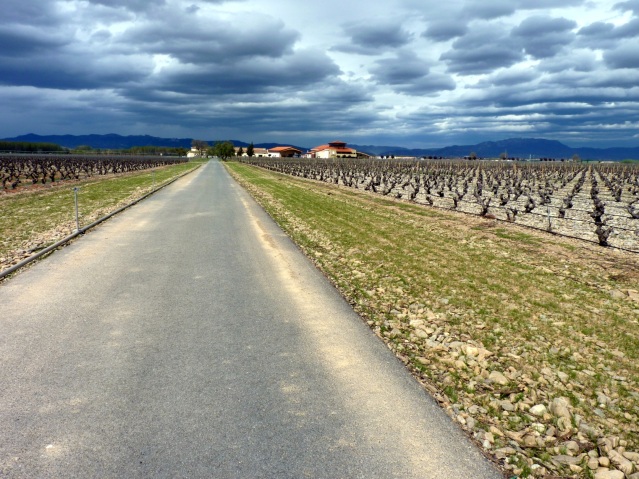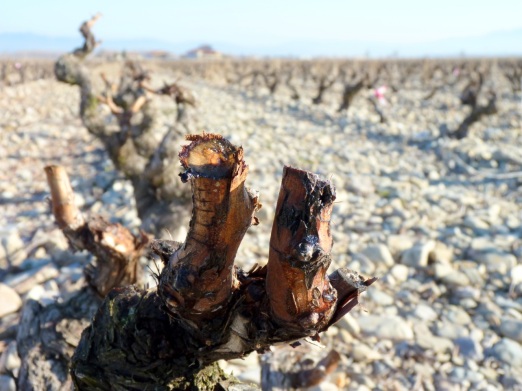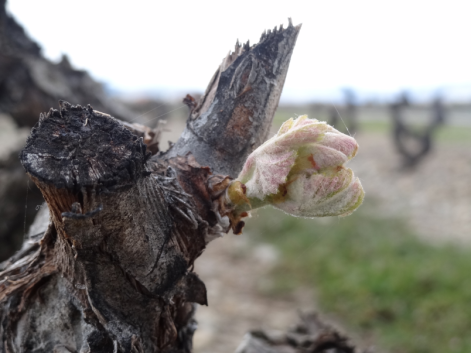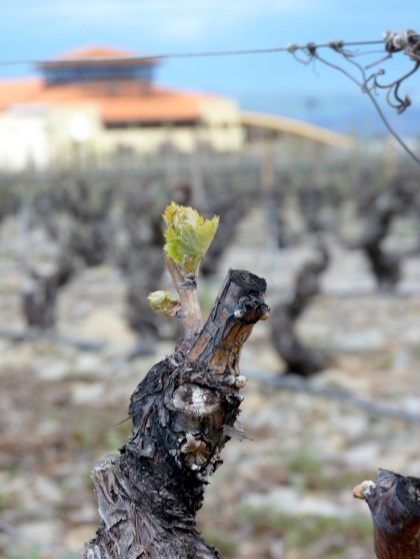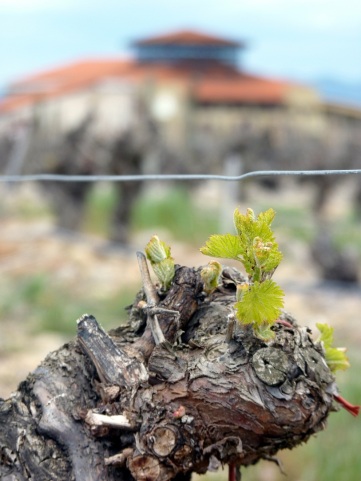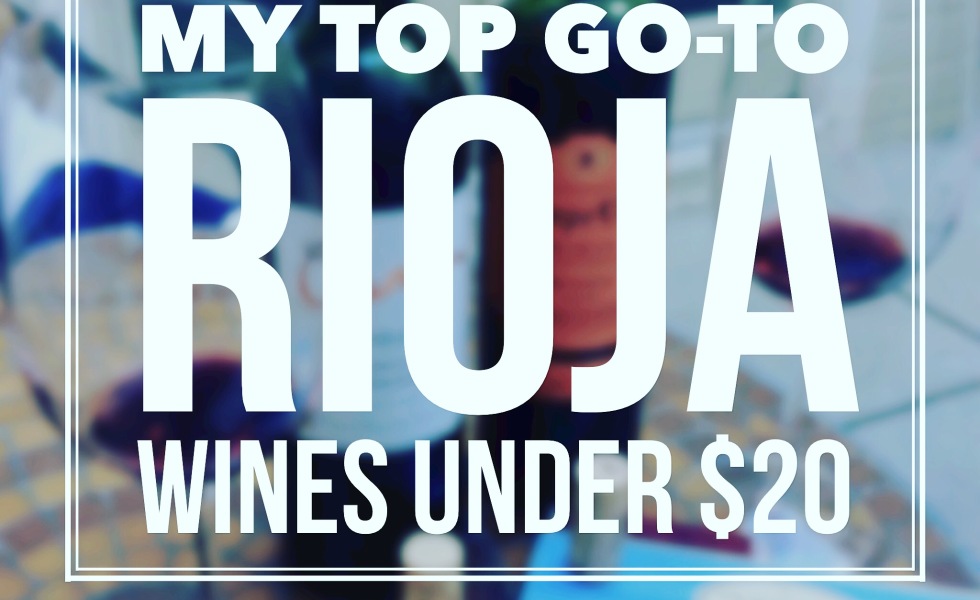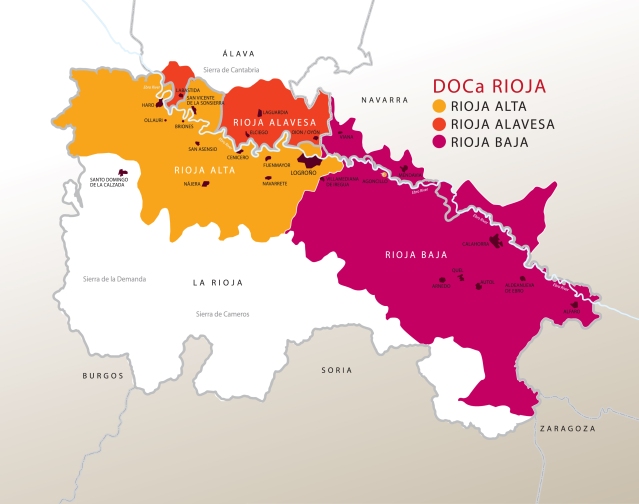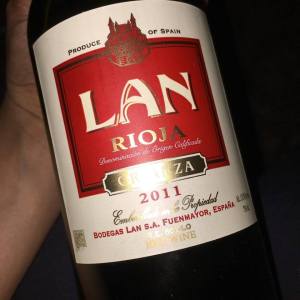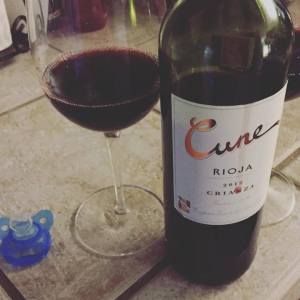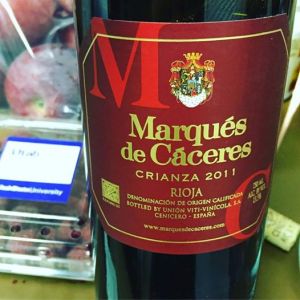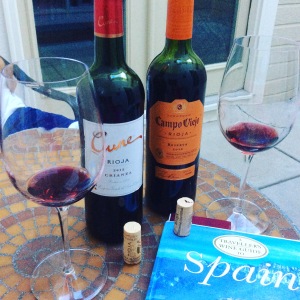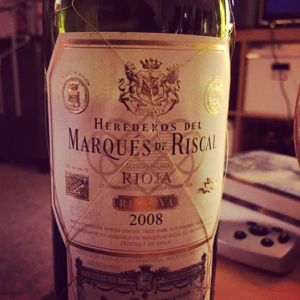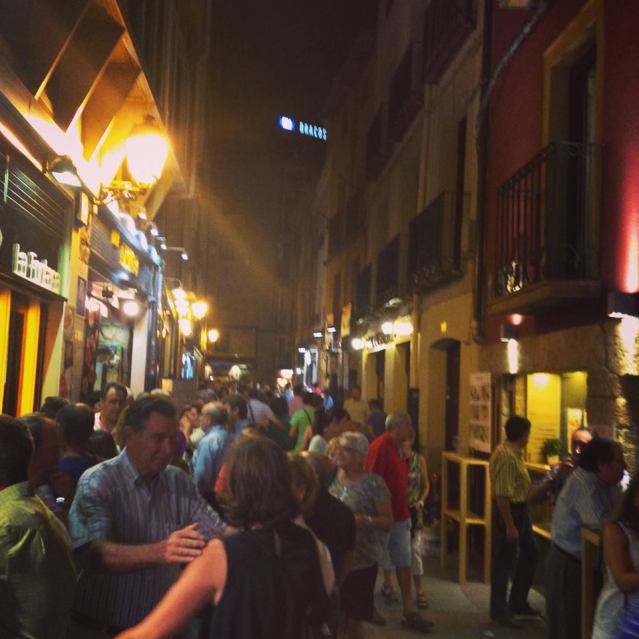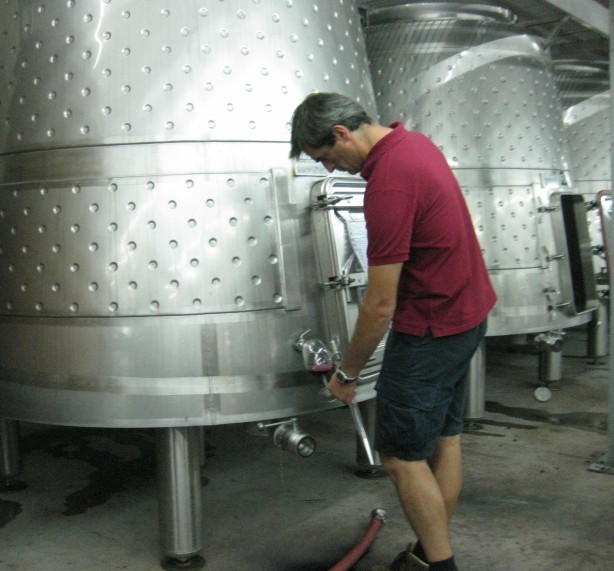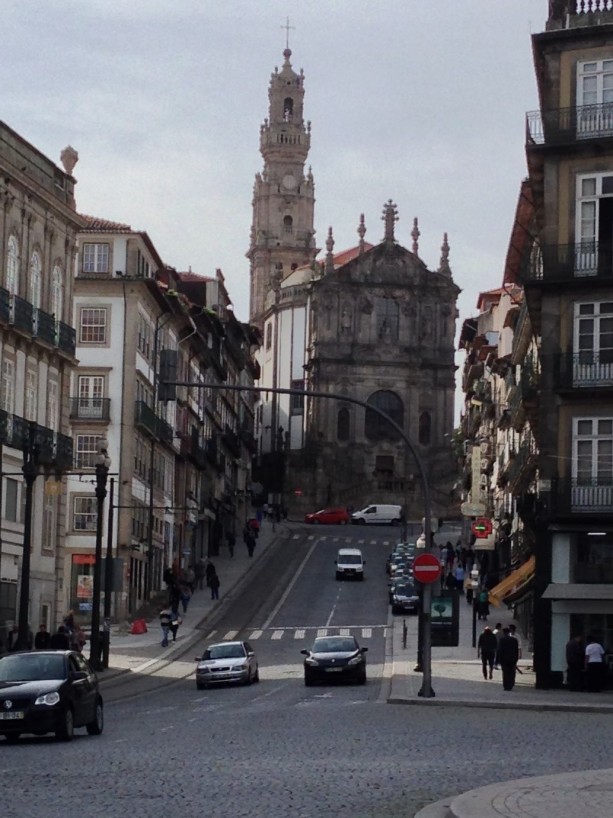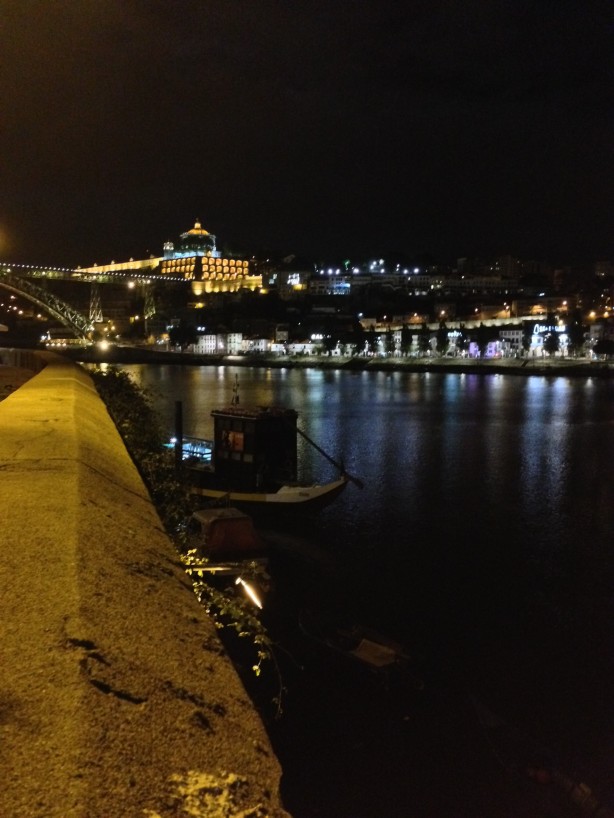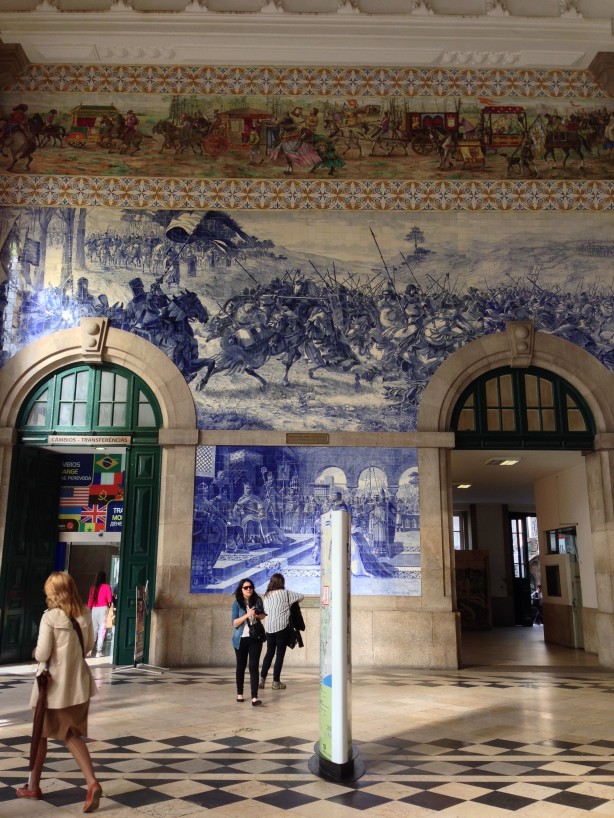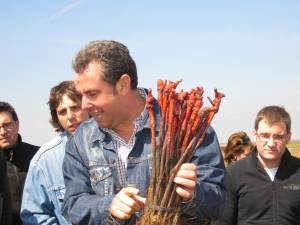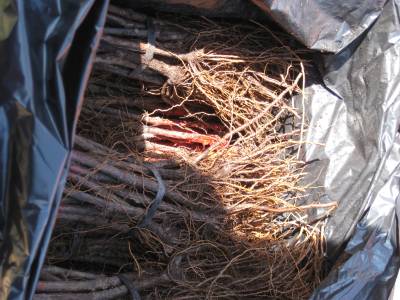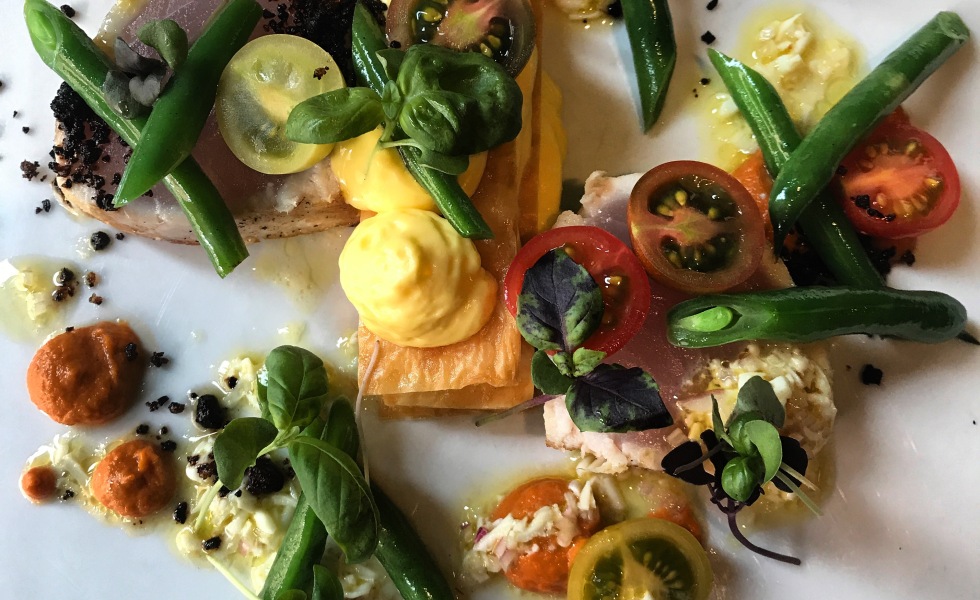Port wine, the nectar of the regular folk
We have champagne to thank for the evolution of what we now know as modern day port wine. In the late 17th century, champagne became known as a modern wine and was incredibly popular with the British and, of course, with the French. According to legend, a Benedictine monk, Dom Pierre Pérignon, pioneered quality changes for champagne and declared, of sparkling champagne, “I am drinking stars.” It wasn’t until later, after his death in 1715, that subsequent changes in production technique following his initial invention caused drinking champagne became the height of fashion in Paris and Versailles. Because it was so limited and nothing like it had been made before, the people who purchased it were invariably rich. This left little for everyone else.
When France and England went to war in the late 17th century, the English boycotted French wine and soon began buying their wine from Portugal. Due to the Methuen Treaty of 1703, Portuguese wine could be imported into England at a third less duty than other wines. This lead to an influx of Portuguese wines into the English market. 1
The first port that was initially made was coarse and cheap, sold as an alternative to claret wine. Port was first introduced to satisfy the tavern market of the English. In 1717, the first trading post was established in Porto. The city of Porto, with its many wine cellars or adegas in Vila Nova de Gaia, has long served as the main export port for port wine. This is where the main production and export of this fortified wine has taken place over the centuries.
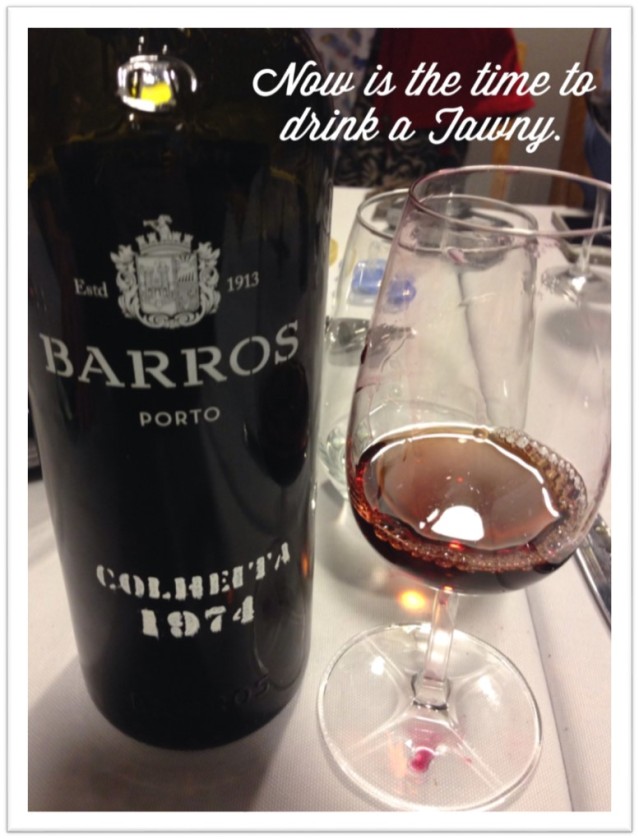
Port wine, also known as Vinho do Porto, is a Portuguese fortified wine from grapes grown in the Douro Valley of Portugal. Traditionally, after the grapes are picked, they are placed in Lagares, which are these large open stone basins where the grapes are trodden by foot or by a wooden stick. While the grapes are fermenting, they create must, which is grape juice. The sugar in the must is then converted to alcohol. When the must has reached about 6-7 percent alcohol, it is then fortified by the addition of a neutral grape spirit known as aguardente (a type of brandy). This simultaneously stops the fermentation process and stabilizes the wine. By stopping the fermentation before it is has completed, there is little residual sugar left in the wine, and a slightly sweet wine results. However, with the addition of the neutral grape spirit and residual sugar, there is an increase in alcohol as well as sweetness.
The first port wines produced were made with dry wines, meaning that the fermentation process had already run its course, leaving no residual sugar. This is what we would call a Dry Port. However, the traditional dessert wines that many know today are made with sweeter wines; thus when fermentation is stopped, residual sugar remains, giving this fortified wine the sweetness and potency we now enjoy.
Port wine is quality protected and monitored by the Instituto dos Vinhos do Douro e Porto (IVDP). In 1756, the Douro Valley, where port wine is produced, was established as a protected region or appellation, making it one of the oldest demarcated and protected wine region in the world.
The Douro Valley has hundreds of varieties of grapes, but there are five key varieties widely cultivated and used in the production of port: Tinta Barroca, Tinta Cão, Tinta Roiz (Tempranillo), Tourigua Francesa, and Touriga Nacional.
Ports from Portugal can be divided and then subdivided into numerous categories. There is port that undergoes “reductive” ageing, which are wines aged in sealed glass bottles. A second main category is port wines that are matured in wood barrels—a process known as “oxidative” ageing. The port wines that possibly interest you most are the Rubies and Tawnies that you have likely heard about and maybe already tried.
Tawny Port is wine made from red grapes, aged in wooden barrels known as pipas. This process exposes them to gradual oxidation and evaporation. They are generally nutty in flavor and a golden brown in color. They can be aged for 10, 20, 30, and 40 years. In the image below, you will see what we call Colheita.
Colheita is a tawny port of a single vintage, instead of an age indication of 10, 20, or other years. Rather, it has a specific vintage year mentioned. Below you will see there is a Colheita of 1998 that is still in barrel. Colheitas can spend 20 or more years in barrel before being bottled and sold.
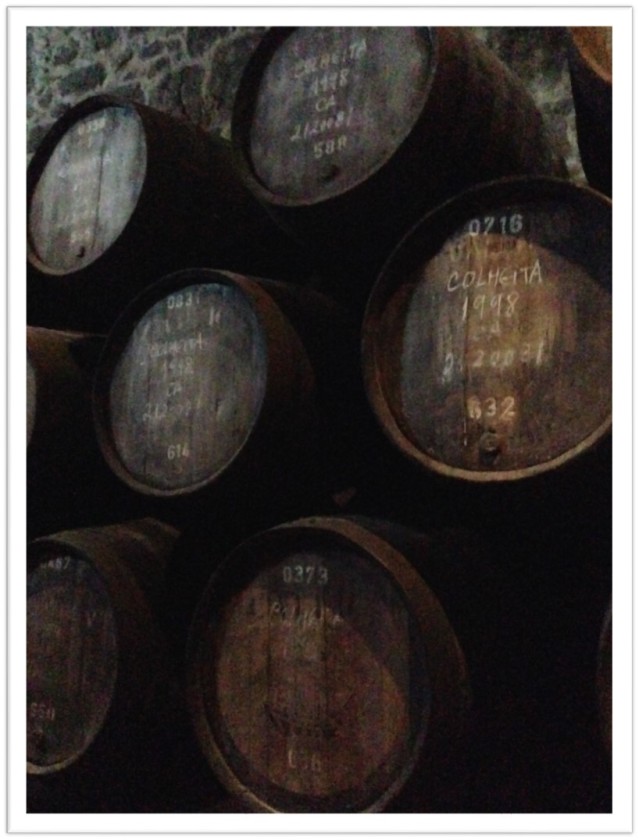
Ruby Port is among the most popular of port wines produced. These wines are generally stored in concrete or stainless steel to prevent oxidative ageing and to protect the beautiful ruby color common to these wines. Rubies are generally blended to be consistent in color and flavor. They are fined and cold filtered. They tend to be somewhat fruitier on the palate and in some ways fresher. A Ruby isn’t generally a port that will improve with age.
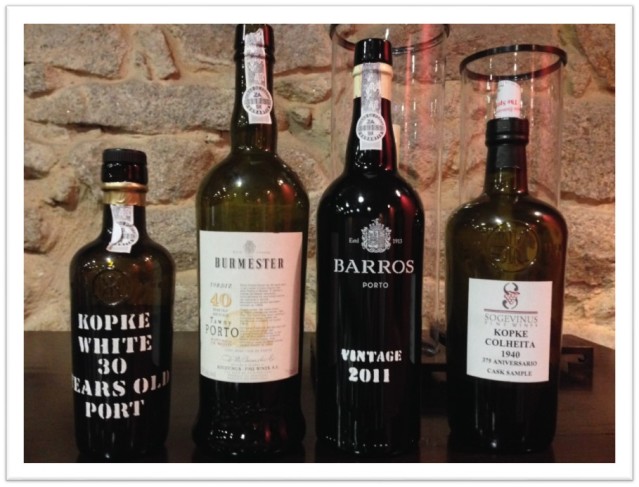
Vintage Port is a wine that is made entirely from the grapes of a declared vintage year by the individual Port house. Vintage ports represent approximately 2% of overall port production. While some perceive producing port wines labeled as vintage ports as a way to increase revenue by naming every year a vintage (or as some perceive it, a great year), the decisions to label certain port wines as vintage port are not taken lightly, and many reputations hang in the balance here. Vintage ports are aged in barrels for a maximum of two and a half years before bottling and then require another 10 to 40 years of ageing in bottle before they are ready to be consumed. Since they are aged in barrels for less than three years, they still retain a dark ruby color and a substantial amount of freshness. It is recommended to consume a vintage port wine within a few days of opening it, and it should be treated like a normal wine.
2011 is an example of a phenomenal vintage- many wineries have released their 2011 Vintage Ports. I would highly recommend getting your hands on Vinhos Oscar Quevedo Vintage Port 2011, which was awarded 96 points by the Wine Spectator this month.
Late Bottled Vintage (LBV) is generally a port wine that was destined for bottling as a vintage port, but which, due to lack of demand, was left in a barrel longer than planned. These port wines are generally bottled four to six years after the vintage year. Some are filtered; others are not and require decanting. The wine is ready to drink when it is released.
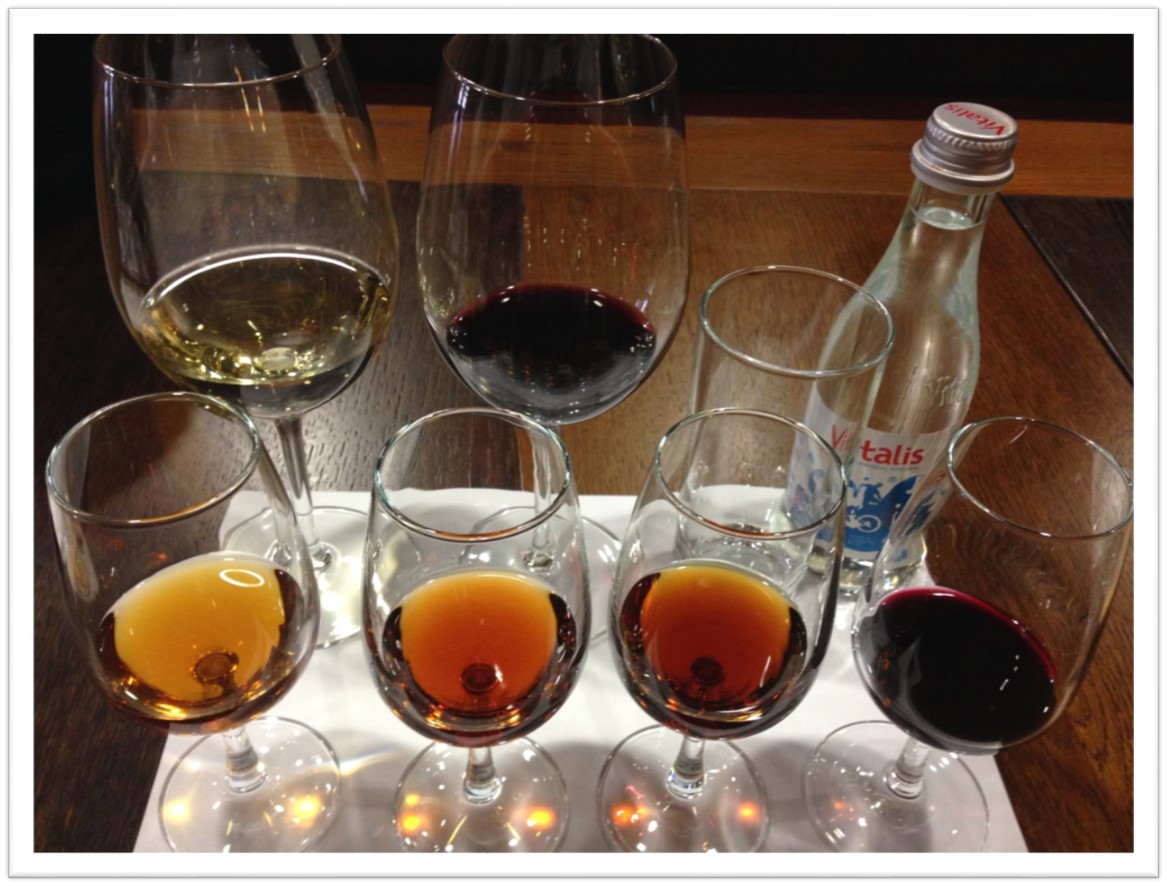
Calem Port Tasting- Bottom Row: Left to Right- 30 yr White Port- 40 yr Tawny – 1940 Colheita – 2011 Vintage Port
There is, honestly, so much to learn about port, and there are even white and rose port wines available as well. Port wine is extremely flexible as a wine/spirit and can be used to make mixed drinks as well.
Two good friends of mine, Ryan and Gabriella Opaz of CataVino, told me about a phenomenal White Port and Tonic drink. Such a drink would be a great intro to enjoying port wines, especially on a hot summer day. I found a recipe online by For the Love of Port with a great recipe to try.
How to make a Port and Tonic:
What you’ll need:
- Bottle of Dry White Port (such as Taylor’s Chip Dry, Fonseca Siroco, etc.)
- Tonic water
- Fresh mint leaves
- Ice cubes
In a tall glass, place 5-8 mint leaves and then top off with ice cubes. You can add more or less mint depending on your taste preference. Then add in equal parts White Port and tonic water and stir.
Chin Chin!
1 Work Cited: Inventing Wine: A New History of One of the World’s Most Ancient Pleasures, by Paul Lukacs; W. W. Norton & Company (December, 2012)And stay posted for an interview with a port wine producer from Vila Nova de Gaia—coming soon!
Seasons of the Vine in La Rioja
A single wine estate, such as Finca La Emperatriz, is beautiful, especially when the clouds roll in. The colors of nature naturally come forward and create this beautiful contrast. We are currently in the time of year, while unpredictable lately, goes the saying, “April showers, bring May flowers!”
In this case, the month of April, in La Rioja brought the much needed rain, especially important at this period of time for the growth of the vine. At the end of January to the end of February, the pruning was done and the old branches/canes were removed. This was done to optimize the production potential of the grape vine. As Finca La Emperatriz is located at the outer most edge of Rioja Baja at an altitude of about 570 meters above sea level, the weather is cooler here and is influenced not only by the Continental but the Atlantic and Mediterranean winds that converge here. This altitude, weather and rocky soil causes the vines to bud later than the rest of Rioja Alta.
Taking this into consideration, this is also an advantage due to climate change. As the weather throughout Europe and the rest of the world, goes up, locations in higher altitudes and generally cooler climates will benefit from a cooler summer than other wineries located in areas such as Rioja Baja. Right now, you can see the differences in growth states of the vine.
Right now, it is fascinating to see the differences not only in trellis style but in where the vines are located around the estate. We are currently experiencing 4 different stages of growth at the winery as of 25 of April, 2012 and 5 different stages as of May 2, 2012.
Stage 0: Dormant
The buds are closed and there is no indication of growth. In this image, we have just pruned it and it is “crying” and the sap has begun to flow through the vine and begins to come out of the cuts where we have pruned it. The buds are almost not apparent.
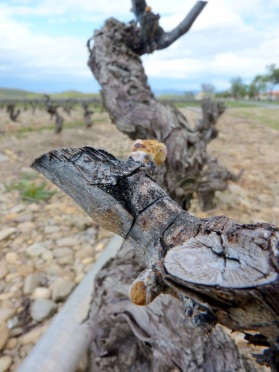
Swollen Bud and Bud BreakBud Break– Stage 1 and 2
Stage 1: Bud Swelling
The buds on the vines in Goblet or Bush style, a very traditional trellis system in La Rioja, are either dormant or just now starting to swell.
Stage 2: Bud Break- Bud Burst
This is when the leaves from the buds start to swell and emerge, still maintaining a slightly rounded shape. In the above image you get a chance to see bud swelling and bud break. The Bud Break or bud Burst is on the top right of the image above.
Here in this image, you can clearly see the leaves starting to come forward out of Bud Break/Bud Burst. It is somewhat in Stage 2 and 3.
Stage 3: Leaf Emergence
Leaves are now recognizable and the shoots are starting to photosynthesize. Here you can see they are starting to open up.
The vines furthest from the River Oja are already starting to enter the 4th stage, which is called Shoot Growth.
Stage 5: Flower Cluster Emergence
– 4 to 8 inch shoots with 3 to 6 leaves there is also flower cluster emergence.
Others in more clay like soils are actually already into Stage 5 where the clusters are starting to show. I will have to go out into the vineyard one more time so I can upload the picture. Stay tuned!
Written by April Hennig of www.sacreddrop.com.
Juan Carlos Sancha: A Riojan Champion of Sustainable Viticulture
Juan Carlos Sancha was my professor at Universidad de la Rioja and later became my mentor and good friend. I am so proud of everything he’s done for Rioja and love when I see others recognizing his hard work and dedication to the wine industry. Felicidades Juan Carlos y Marian!
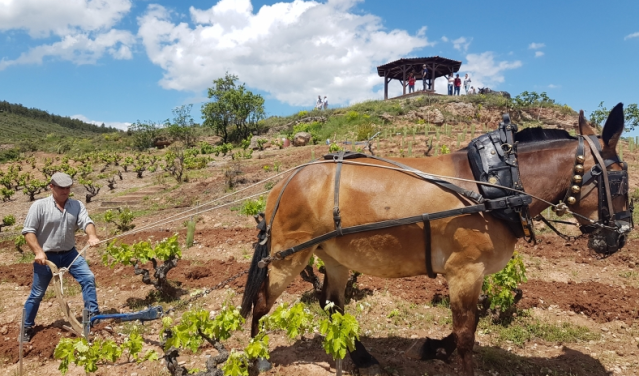
The World Tourism Organization’s fourth Global Wine Tourism Conference in Chile in December 2019 emphasized the role of wine tourism for sustainable rural development and launched a call to action.
UNWTO General-Secretary Zurab Pololikashvili said: “Wine tourism creates jobs and entrepreneurship opportunities. It touches all areas of the regional economy through its linkages to handicrafts, gastronomy and agriculture. There lies its great potential to generate development opportunities in remote destinations.”
Rioja wineries read his message loud and clear.
Today, over 400 Rioja wineries have a tourism program, increasingvisits to wine villages, generating jobs, promoting knowledge about wine culture, enhancing the wineries’ image and creating additional revenue streams. It’s a win-win situation for everyone involved.
However, challenges remain. Among them is attracting discerning wine tourists who have no shortage of choices of wineries to visit. The most forward-thinking wineries here are moving…
View original post 746 more words
My Top Go-To Rioja Wines Under $20
Finding Rioja wine in your local stores isn’t as hard as most people think. Having lived in Rioja for two years and having completed a Masters of Viticulture and Enology (winemaking) there, this place is my second and favorite home. I am often asked what my “Go-to” Rioja wines are, and I have a few recommendations for a few favorites that you are likely to find in your store.
Let me first explain something about the wine regions of La Rioja, Spain.
The Regions of La Rioja
La Rioja has three wine regions where wines of varying styles are made. The Rioja area is subdivided into three different regions – Rioja Alavesa, Rioja Alta and Rioja Baja. While la Rioja Alavesa and la Rioja Alta are located closer to the mountain, they are at slightly higher elevations and have a cooler climate. This results in wines with more acidity and slightly more finesse and elegance.
La Rioja Baja is located to the southeast where it is drier and warmer. The annual rainfall in the region ranges from 12 inches in parts of Baja to more than 20 inches in La Rioja Alta and Alavesa.
Although each winemaker adds their own special touch, terroir is not something that can necessarily changed. If I want a lighter, more distinguished wine, I tend to lean towards wines from Rioja Alta or Rioja Alavesa. These two areas, of higher altitude, are located in the northernmost part of La Rioja near Basque Country (if not in it). If I want a slightly bigger-bodied wine, I lean towards wines from Rioja Baja, where there is a bit more sun and slightly different soil types dominate.
Aging and Oak
I also then consider how much aging or oak I would like on my wine. Rioja has a great classification standard that helps you understand how much long your wine has been aged; based on your tastes, this classification standard can help determine the right wine for you.
I love a Cosecha wine (a wine in its first or second year with little to no oak; it has a green label) for summertime due to how light and refreshing it is. However, my go-to night wine is generally a Crianza (12 months+ in oak plus one year in bottle; it has a red label). I reserve Reserva (aged minimum of three years, tends to be 18-24 months in oak with the rest of the time in bottle) for those nights when I am having a hearty meal with friends. These classifications, while made to be easy to understand, can be at times confusing. Some winemakers who chose to age a wine for 8 months, for example, based on the grape variety, terroir, vintage, etc., still have to use a Cosecha, or green. label.
In general, I stick to Crianza and Reserva unless it is a white wine. For a white wine, I prefer the wine of the year or the Cosecha wine.
Here are a few of the wines that can easily be found in your grocery or liquor stores with a cost likely under $20. If you are lucky, you may even find them for under $15 on sale.
LAN Crianza or Reserva
C.V.N.E. Crianza
Marqués de Cáceres Crianza
Campo Viejo Reserva
Marqués de Riscal Reserva
While I haven’t listed vintage, the wines currently released onto the market are ready to drink. Unlike their US counterparts, there are strict rules as indicated by the labels and by the Regulatory Council in Spain that prevent wine from being released before it has been properly aged. You generally can’t go wrong with the suggestions listed above. If you are interested in specific vintages, click here for the listing of the vintages.
The majority of the wineries listed above have been making wine since the 1900s and have vines close to 100 years old. Most are still held by the families who started the wineries back in the 1800s, and all have had a very high standard in winemaking for some time.
The wines listed above are also wines made with the traditional grapes grown in the region: Tempranillo, Garnacha, Graciano, Mazuelo and Maturana Tinta. These wines tend to be elegant and subtle yet powerful in the mouth. To me, they bring me back to my time in La Rioja where I ate and drank with friends on Calle Laurel, the famous tapas street of Logroño.
These Rioja wines have an earthy, dark cherry, tobacco mouth taste that conjures up all the sights, smells, and sounds of this amazing town. To me, they are special, and every sip I take brings me back to those times. While they may not do the same for you, I hope that you will visit La Rioja and have a chance to experience what I have loved so much about this region. It’s not just about the food and wine but about the people behind the wine that make it so special.
How to Make Your Own Wine Aroma Study Kit
How to Make Your Own Wine Aroma Study Kit | How To | Learn Wine | Wine Spectator
In case you are wondering how to better your “Nose” or just how to identify the smells in your wine that everyone but you seems to pick up…. check out this create way to do at home or even with those silly wine friends of yours.
All you need to make your own wine aroma kit are a few items: some local fruit from your supermaket, wine glasses and a neutral white or red wine. Before you head to the supermarket, take with you a taking list of things you commonly expect to smell in the wines you are going to taste. That is if you have a particular wine in mind that you would like to better understand. In order to get these smells, just look up online “Wine characteristics” + “wine variety” you want to understand better like Pinot Noir, Riesling or Cabernet Sauvingnon.
For example, if I want to better understand what a Tempranillo (variety) from Spain smells like, I would pick up some black berries, sour cherries,strawberry, piece of clean leather, perhaps even some tobacco and vanilla. While smelling, it might help to look at a Wine Aroma wheel developed by Ann Noble: http://winearomawheel.com/ to help you identify the wines post this experiment. You can also find visual versions of this online if you type in “Wine Aroma Wheel”
Thanks to Wine Spectator, they have laid out how to do it with precision. In the past, I’ve used an oz. of neutral cheap box wine and placed the berries, fruit or spices into the glass, let it sit and swirl and smell. This is a more precise and easy to follow method.
Enjoy this little experiment!
What you will need:
- One glass for each aroma standard you plan to make
- One bottle of an inexpensive, neutral white wine such as Pinot Grigio or Colombard is enough to make 10 to 12 white wine aroma standards
- One bottle of an inexpensive, neutral red wine such as Merlot or Beaujolais is enough to make 10 to 12 red wine aroma standards
Directions:
- Mark each glass so you know which aroma it will contain; write the name of each aroma on a small sticker (the removable kind are best) and label each glass.
- Pour 2 ounces or 4 tablespoons of wine into each wineglass.
- Add the indicated amount of each aroma ingredient to its own glass of wine and let it soak for an hour or so.
- After the hour is up, remove any solid ingredients.
- Swirl and sniff each glass of wine so you can become familiar with the aroma that has been added to it.
- Next, test yourself by transferring each sticker to the bottom of its glass where it can’t be read. Then shuffle the glasses. Swirl and sniff the standards. Can you identify any of them?
-
White Wine Aroma Ingredient Lemon A small portion of fresh lemon peel and one teaspoon lemon juice Grapefruit A small portion of fresh grapefruit peel and one teaspoon grapefruit juice Pineapple One teaspoon pineapple juice Melon A chunk of ripe cantaloupe Peach A chunk of ripe peach or one tablespoon syrup from canned peaches Pear A chunk of ripe pear or one tablespoon syrup from canned pears Green grass Three crushed blades of green grass Honey One teaspoon honey (stir to dissolve) Vanilla One drop vanilla extract Nutmeg A pinch of freshly grated nutmeg Smokey Oak One drop Liquid Smoke, available in many supermarket spice sections Red Wine Aroma Ingredient Strawberry Two crushed ripe or frozen strawberries Strawberry jam One teaspoon of strawberry jam (stir to dissolve) Cherry Two crushed ripe cherries or a tablespoon of juice from canned cherries Mint One drop of mint extract or a crushed mint leaf (spearmint or peppermint) Green Pepper A quarter of a green pepper, diced Black Pepper A few grains of freshly ground black pepper Chocolate One teaspoon of powdered cocoa or shaved chocolate Coffee About 1/8 teaspoon ground coffee Tobacco One small pinch of cigarette or pipe tobacco Vanilla One drop vanilla extract Smokey Oak One drop Liquid Smoke, available in many supermarket spice sections
Special thanks to “Wine Spectator- How to” Section. For more information and learn more on wine, please check out http://www.winespectator.com .
Welcome to the Valley of Gold: Douro, Portugal
The Douro River Valley has steep and twisting canyons that have been sculpted over the years into terraces by hard-working farmers. The birthplace of port wine, the Douro River Valley was demarcated in 1756 by the Marquis of Pombal and is one of the oldest regulated wine regions in the world. It is also one of the most beautiful regions in the world to visit. Indeed, this spectacular region was classified as a UNESCO World Heritage site in 2001. It’s not surprising, given the history and beauty of this place. I was rendered speechless by the majesty of this region, this valley of gold, and what it has to offer.
While there are numerous theories on why this region was called Douro, the name might be traced to the Celtic god of water Durius, or perhaps to the phrase “De ouro,” which means “gold” in Portuguese. Either way, this region is a region of many riches and experiences to be had. While this valley is known primarily for its port wine, it is now starting to be recognized also for its high-quality table wines. All of these wines come from the terraced vineyards of Portuguese grapes, such as you can see in the photo below. 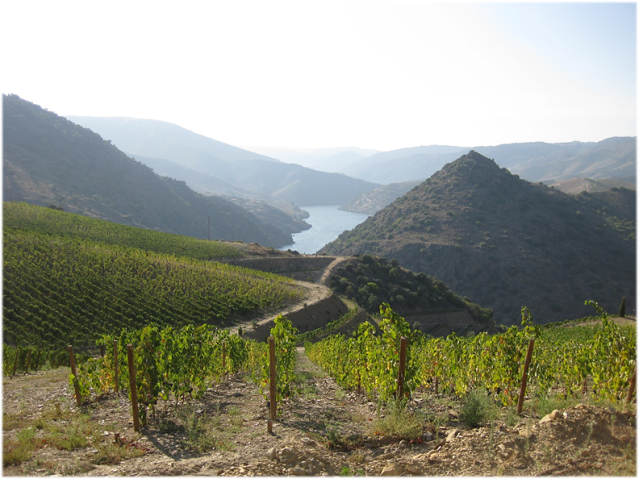
The Douro River actually begins in north central Spain, where it is called Duero; it then flows from there to Porto, Portugal, where it is called Douro.
How to get there: As you can see from the map below, the easiest way to get to the Douro River Valley is actually via a flight from Lisbon to Porto. Then you can travel by boat or train to Régua or Pinhão, the two most popular cities of the Douro River Valley.
Plan on spending at least two days in this beautiful valley. Port wine enthusiasts will likely want more days to visit all the beautiful Quintas (country inns or estates) along the river. When planning your trip from Porto, it is about two hours in car, or two to three hours by train, to the cities of Régua or Pinhão. It is advisable to visit during the week, since weekends in the summertime may be quite busy.
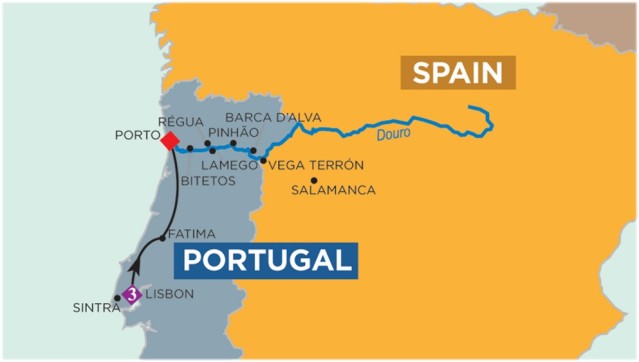 GLPWorldwide.com Map of Enticing Douro
GLPWorldwide.com Map of Enticing Douro
Where to visit: Quinta de Covela– S. Tomé de Covelas 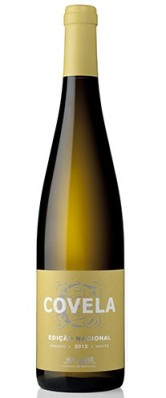 My recommendation would be to take the train from the São Bento station in Porto directly to Régua. While in Régua, stop off and visit the Vinho Verde region of the valley. Visit Quinta de Covela, where some of the best tasting Vinho Verde is made. (The direct translation of vinho verde is “green wine,” otherwise known as white wine.) Under the management of Mr. Tony Smith, part owner of Quinta de Covela, and renowned winemaker, Rui Cunha, Quinta de Covela has come back from near ruin to prosperity. Their award-winning wines are making strides in the wine world—in particular, their Covela Escolha Branco 2012, and my personal favorite, COVELA Edição Nacional Branco. This last wine is made with 100% Avesso grapes. I had the pleasure of enjoying their wines and their beautiful Quinta this past fall. I even had the chance to go running with the Covela dogs, Teddy, Alef and Spot, through the small towns of Portinha and Covelas. Stay tuned for my interview with Mr. Tony Smith.
My recommendation would be to take the train from the São Bento station in Porto directly to Régua. While in Régua, stop off and visit the Vinho Verde region of the valley. Visit Quinta de Covela, where some of the best tasting Vinho Verde is made. (The direct translation of vinho verde is “green wine,” otherwise known as white wine.) Under the management of Mr. Tony Smith, part owner of Quinta de Covela, and renowned winemaker, Rui Cunha, Quinta de Covela has come back from near ruin to prosperity. Their award-winning wines are making strides in the wine world—in particular, their Covela Escolha Branco 2012, and my personal favorite, COVELA Edição Nacional Branco. This last wine is made with 100% Avesso grapes. I had the pleasure of enjoying their wines and their beautiful Quinta this past fall. I even had the chance to go running with the Covela dogs, Teddy, Alef and Spot, through the small towns of Portinha and Covelas. Stay tuned for my interview with Mr. Tony Smith.
Quinta de Napoles– Niepoort Winery in Santo Adrião Niepoort, while well-known in Portugal for their high-end quality Ports, their modern still wines are stunning. I have yet to have a Niepoort that I haven’t thoroughly enjoyed. This beautiful Quinta de Napoles is situated in the town of Santo Adrião and has a brand new facility with state of the art equipment and a spectacular view of the valley. If not for the wines, come for the view.
What to experience:
One of the most beautiful times of the year to visit this region is during harvest, usually around September of each year. If you happen to visit during this time, I recommend taking a three-hour boat river trip along the Douro River, starting in the morning to mid-day, and departing from Pinhão. You can take the train back to Regua and spend the evening at Quinta Sta Eufêmia, where you can experience grape stomping in traditional lagares (a large, typically stone trough in which grapes are stepped on and pressed, separating the grape skin from the pulp to create must, grape juice).
When I first came here with the University of La Rioja as part of my master’s program in viticulture and enology, I left with unforgettable memories, including wading in grapes while dancing to accordion and drums at Quinta Santa Eufêmia Winery in the Douro River Valley. Take a look!
Quinta de Vesuvio– W.J. Grahams of Symington Family Estates
I had the pleasure of studying under Pedro Leal of Symington Family Estates and experiencing harvest in the Douro River Valley for the 2011 Vintage at one of the most prestigious and well-known Quintas, Quinta de Vesuvio. The 2011 Vintage is now known as one of the best years for wine in general, as well as the best Vintage year for port wine. I was honored to be a part of the punch downs of the Tinta Roiz (also known as Tempranillo grape varietal) while I was there. Watch this:
Where to eat:
While there are plenty of great places to eat, one of my most memorable and exquisite experiences was at the Restaurante DOC- Rui Paula in the town of Folgosa, located off Estrada Nacional 222:
tel.: +351 254 858 123, e-mail: doc@ruipaula.com.
Every small plate was paired with a regional wine. Needless to say, there were many glasses of wine and many, many memories to pair it with.
Here is an example of their version of Terra/Mar or Surf and Turf. All I can say is that it was one of the best meals I had ever had in my life.
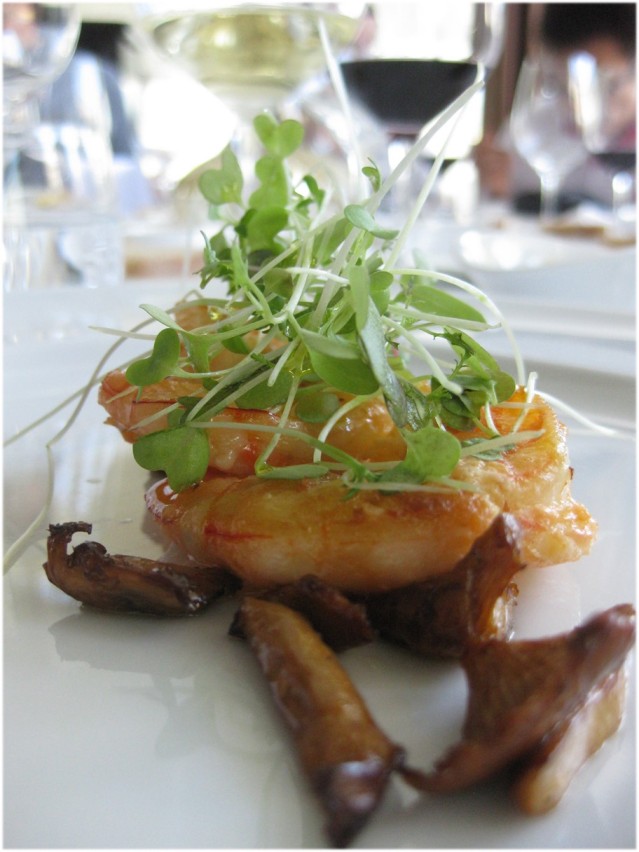
If all of this isn’t reason enough to visit, I don’t know what is. Time for you to add this beautiful valley of gold, the Douro River Valley, to your list of must-see places!
Note: It is highly recommended to call or e-mail for reservations at this world-class restaurant.
If you are interested in having me lead you through a tour of the valley to a number of unforgettable Quintas in the Douro River valley, please contact me to discuss options.
Learn the basics of Port with Oscar of Vinhos Oscar Quevedo
In my recent trip to Porto and then into the Douro River Valley, I had a chance to sit down with a good friend, Oscar Quevedo. He teaches us the basics of Port 101.
Oscar’s family owns and runs Quevedo Port Wine, which you can visit in Porto, Portugal. His Port Wine Cellar is located across the riverfront of Porto, in Vila Nova de Gaia.
For more information, visit their website at Quevedo Port Wine.
Chin Chin!
Make sure to check out the most recent posts on Porto and Port wine on Sacred Drop.com
Porto, the Gateway to the Douro Wine Region
Porto, formerly known as “Portus Cale” by the Romans, latin for Port of Cale, is now known as Oporto (The Port) by the locals following the Reconquest in AD 1000. This city is full of Old-World charm with its red-tiled roofs, soaring bell towers, extravagant baroque churches, and stately buildings tumbling down the hillside to the River Douro (Rio Douro). Porto is one of Europe’s oldest centers and was registered as a World Heritage site by Unesco in 1996.
Fun fact: Did you know that Porto put the “Portu” in Portugal? In AD 1000, after the reconquest of Portugal from the Moors, the city’s name was made the name of the new country,“Portucale.”
I personally love the beauty of this town, and on my first real visit to this town, I marveled at the historical and modern significance that it had on the wine industry. Porto is famous for its export of Port wine; however, this region has so much more to offer than just Port wine. Indeed, Porto is a vibrant city with amazing food and culture.
A little wine history of Porto:
While it is thought that grapes have been grown in Portugal for over 4,000 years, it wasn’t until the 14th century that Portugal really became known for its wine trade with England. This wine trade later expanded in the 17th century to other countries such as Scotland and the Netherlands.
Port Wine Basics:
Port wine, also known as Vinho do Porto, is a Portuguese fortified wine made exclusively from grapes from the Douro Valley in northern Portugal. It is typically a sweet red wine that is often enjoyed with desserts or cheeses. There are now many different types of port: white port, rose port and the traditional red port.
Before I delve into everything port, I want to talk about Porto. I’ve covered Port wines in this article.
The city of Porto:
Porto—or Oporto, as I like to call it—serves in many ways as the historical and cultural gateway to the stunning Douro River valley. It is worth it to stay a few days here before setting off into the Douro river valley.
Porto is a compact city with rolling hills, so be prepared to walk up and down quite a bit. I would recommend a great pair of walking shoes. As I visited the city, I created an “Oporto Must See List” which I saved on my Foursquare account. (I love using this tool because it maps it all out for me and as people provide me with recommendations, I add it to my list and can find it instantly.)
Porto is technically divided into three parts:
Ribeira, which is Porto’s riverfront center with a gorgeous view of all the Port wine houses across the river in Vila Nova de Gaia. This is a stunning neighborhood with great riverside restaurants and outdoor patios. It can be very touristy, so be prepared to look at menus and pricing first before sitting down. If you are a runner or a walker, you can run all the way from the port at the river’s edge inland as well as out to the sea along a busy road. I would recommend going early in the morning before the traffic picks up.
Places to visit:
- Palácio da Bolsa, R. de Ferreira Borges 55, next to the Church of St. Francis —This stunning building is a must-see. It has some lavishly decorated rooms, including the Arabian room, which was inspired by Granada’s Alhambra.
Place to eat:
- Bacalhau Restaurant—This tiny little place is hidden on Rua de Cima do Muro Bacalhoeiros 153. It is right on the river, and they offer some great dishes of seafood and in particular Bacalhau, also known as dried and salted cod, the nation’s national dish. They also have a great wine menu. You can sit outside or inside, but the views are worth waiting for a table outside. +351.960.378.883
City Center, which is located directly up from Ribeira, on the top of the hillside. I would consider this area to be a more realistic and less touristy area of Porto, especially if you are considering doing some shopping.
Places to visit:
- Sao Bento Train Station, Praca Almeida Garret: This train station, opened in 1916, is still in operation. The entry hall to the train station is covered in over twenty thousand vivid blue “azulejo” tiles, showing the historical and folk scenes of the Douro River region; the tiles were painted by Jorge Colaco in the 1900s. Throughout northern Portugal you will be able to find beautiful blue “azulejo” Portuguese tile that you can take home as a souvenir.
- Clérigos Church and Tower, Rua S. Felipe de Nery: Are you interested in seeing the beautiful city from above? If so, brave the 225-step climb to the top of this towering landmark of Porto. Afterwards, stop over at the Clérigos Vinhos & Petiscos for a small bite and great wine.
Places to eat and drink:
- Bella Doce Praça Almeida Garrett 11, is a great place to sit down and enjoy some of the local pastries and amazing coffee at a phenomenal price. At less than a Euro, you can enjoy a beautiful shot of espresso. It is located directly across from São Bento Train station and has white umbrellas covering the outdoor tables. The entrance has a white awning. It is also directly behind the large green magazine kiosk and by the entrance to the São Bento Metro stop.
- Clérigos Vinhos & Petiscos, Rua das Carmelitas, 151, is a cute wine bar that offers a really good selection of Portuguese wines and aperitifs. It is located in the middle of this very modern-looking outdoor mall with outdoor and indoor seating. I went in the middle of the afternoon, after lunch and before dinner, and enjoyed a small three-bite nibble and spent 3 euros for a Reserve glass of Douro wine. They serve regular-size meals for lunch and dinner.
- Café Aviz, Rua de Aviz 1, is a great no-fuss cafeteria where you can get a reasonably priced meal. I’ve heard the francesinha, which is a sandwich made with a number of different meats, roast beef, different sausages and bologna, then covered with melted cheese, and a beer-and-tomato sauce. It is then topped with an egg at some places and served with French fries. Be aware, it is a heart-attack type of meal but I would rather eat this than food at the millions of fast-food restaurants you now see. Click on this link for a fellow traveler’s experience with the Francesinha.
Vila Nova de Gaia
Now that you’ve stuffed yourself with this amazingly dense sandwich, let’s walk back down the hill and across the river to the Port wine center, Vila Nova de Gaia. This is arguably one of Porto’s main tourist attractions, the port-wine cellars (Caves do vinho do Porto). The Douro can be crossed by any of the six bridges that connect the two sides of Porto together. If you are walk as I would imagine you would after the Francesinha, cross via the Ponte Dom Luis I. The metro runs above it, and the cars and pedestrians can cross on the lower level directly from the Ribeira water front.
Vila Nova de Gaia has always played a very important role in the history of the port wine business. All port wine that was to be exported outside of Portugal, had to first pass through Gaia. It would travel from the Douro Valley, almost 100 kilometers, approx.. 62 miles down river to Gaia, where it would be stored and aged before it was shipped out. This is where you will find a number of port houses that are definitely worth a visit. Here are a few of my recommendations.
Places to visit and taste:
Quevedo Port Wine Lodge, Rua de Santa Marinha, 77, Vila Nova de Gaia: This family-owned port wine business was officially founded in 1991, but the history of the land and the family goes back even further. The Quevedo Vineyard is located in João da Pesqueira, a small town in the heart of Douro Valley, where they make still wines as well as port wines. Oscar, the most well known and recognized member of the family, acts as the face of Quevedo. He is also the member of the family whom you are likely to see in the tasting room, while his sister, Claudia, the winemaker, is generally out in Douro making the wine. Oscar explains how port is made. I personally love his accent. Enjoy:
W. & J. Graham’s Lodge, Rua do Agro 141, Vila Nova de Gaia: W & J Graham’s was founded in 1820 by the Graham brothers from Scotland. The lodge itself was built in 1890, where you can now visit, taste, and tour the amazing facilities. I would highly recommend visiting this great lodge. W & J Graham’s now belongs to the prestigious wine group, the Symington Family, along with CockBurn’s, Warre’s, and Dow’s.
Porto Calém, Av. Diogo Leite, 344, Vila Nova de Gaia: Calém is the closest port lodge to the bridge and therefore makes it a great beginning or end stop. Established in 1859, Calém is one of the oldest port houses in Vila Nova de Gaia. In 2006 and 2008, they won the Best of Wine Tourism award for their architecture and wine tourism services. They offer daily tours and hold a number of events throughout the year. Since 1998, Calém is now a part of Sogevinus Fine Wines S.A., which also owns Kopke, Barros and Burmester.
Given that you’ve probably already drank quite a bit of port at this point, the only option is return to the City Center or go across the river and enjoy the night life and great food Porto has to offer. While I haven’t had a chance to visit all these places, I would recommend checking out my “Oporto Must See List” on Foursquare for more recommendations given to me by fellow travelers and locals.
After visiting Oporto for a few days, make sure you make it to the Douro River Valley. Stay tuned for a series of stories on Portuguese wine and travel.
Chin Chin!
Have you ever wondered if you could plant a grape seed and from it, a vine would grow?
Normally, this is something that as curious children we do with seeds. In fact, I believe my father has some grape vines outside his home that were planted in this exact way.
Yes, technically, you can grow a vine out of a grape seed; however, the grape produced will be different from the grape you consumed in order to obtain the seed. As two parents produce a child that is a blend of both, the same thing would happen here with the seed being the child.
Grapevines are grown from vine grafts. The primary reason for this is is due to the Phylloxera outbreak that originally started in France in 1863 and later spread throughout Europe. Because of this, French enologists and viticulturists came to La Rioja to plant vineyards, initiating the wine industry in La Rioja. However in the late 1890s, Phylloxera had crossed the Pyrenees and invaded this grape-growing region as well.
Phylloxera, originally native to eastern North America, is a pest of commercial grapevines worldwide. Phylloxera was introduced to Europe when avid botanists in Victorian England collected and imported specimens of American vines in the 1850s. Because Phylloxera is native to North America, the native grape species there are at least partially resistant. By contrast, the European wine grape Vitis vinifera is very susceptible to the insect. These almost microscopic, pale yellow, sap-sucking insects, related to aphids, feed on the roots and leaves of grapevines. Phylloxera attacks only the roots. After employing numerous other methods to try to kill and exterminate this “bicho” (insect), viticulturists found it was simply a better solution to live with it than to struggle to find a solution to kill it.
This is where the idea of using grafts of an American vine began.
Grafting is a horticultural technique whereby tissues from one plant are inserted into those of another so that the two sets of vascular tissues may join together. In most cases, one plant is selected for its roots; this plant is called the stock, or rootstock. The other plant is selected for its stems, leaves, flowers, or fruits; this plant is called the scion. The scion contains the desired genes to be duplicated in future production by the stock/scion plant.
In the case of Phylloxera, the solution was grafting a Vitis vinifera scion onto the roots of a resistant Vitis American native species (Vitis Riparia, Vitis Rupestris or Vitis Berlandieri), as you can see in the two images below. Afterward this graft is usually covered in wax to seal the graft. These are then sold, and viticulturists will then plant these rootstocks in the ground—and this is where today’s European grapes come from.
A Foodie’s Journey through Denver in a Day
Posted on July 11, 2021 2 Comments
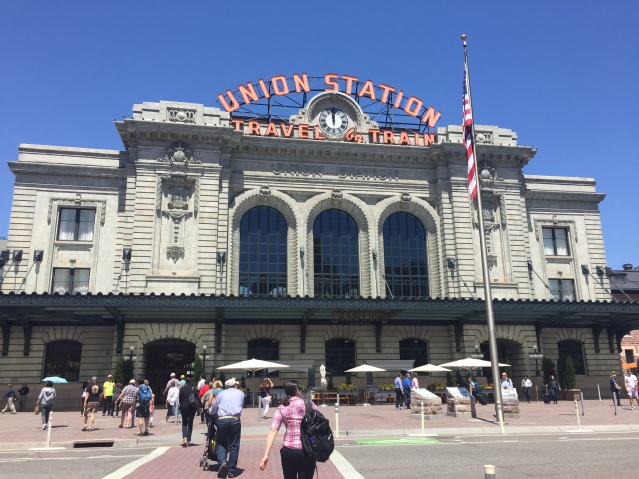
Stop 1: Breakfast
No trip to Denver is complete without a few food stops, and if you are a foodie like me, I would recommend starting with a hearty breakfast at Snooze AM.
If you haven’t heard of Snooze, then it’s time for you to try it. Snooze is my go-to breakfast place early in the morning. As the adage goes, “the early bird gets the worm;” in this case, if you arrive early to Snooze, you’ll beat the lines and get in fast. So literally, don’t snooze…or you’ll wait a good hour or so for your breakfast.
Snooze was started in Denver in 2006 and has now expanded to California, Arizona, and Texas. I personally love to start with their Straight Up or Spicy Bloody Marys or their fresh-from-the-tap Mimosas. Then I love to dive into one of two items, either their 3-Egg Omelets or their delectable Cinnamon Roll Pancake, the latter of which I always order on the side anyways and split it with those at the table. That is, of course, if I feel like sharing! You honestly can’t go wrong with any item on their menu.
Visit them at the Denver Union Station starting at 6:30 a.m. at 1701 Wynkoop Street, Suite 150, Denver, CO 80202. They are tucked inside the really cool and renovated Union Station.
Stop 2: Walk it off
Once you’ve filled your belly, it’s time to burn off some of those cholesterol-laden calories. I recommend enjoying the sights with a light walking tour with Denver Free Walking Tours. They start at 10 a.m. and meet at the Veteran’s Memorial off Lincoln Street, and they end at Coors Field. It is about a two-hour walk and covers about two miles. Thus it isn’t too much of a hike but it’s enough to get you going. If you are pushing around a stroller, it isn’t too hard to manage either. These tours run May 1st through October 31st, seven days a week; then from November 1st to April 30th, they run only on Saturdays and Sundays.

These tour guides work off their tips, so do tip them generously! The tour covers the State Capitol, the Civic Center, the Denver Art Museum, the U.S. Mint, Larimer Square, and 16th Street Mall, and finishes at the famous Coors Field. These are all the really essential places to visit while in town. This is indeed a great way to experience downtown without having to think too much about it.
Stop 3: Food Truck time!
Perhaps I shouldn’t have recommended a big breakfast, but given that you’ve now already walked some of it off, you can indulge once again. Do this at the Civic Center Eats, which is open 11 a.m. to 2 p.m. on Tuesdays, Wednesdays, and Thursdays from May 2nd to October 5th. It is Denver Metro’s largest gathering of gourmet food trucks and carts (23-25 food trucks to be exact). You can taste everything from local burgers to Cajun to Indian food and all the while enjoying live music and the beautiful setting of the Civic Center Park.
Stop 4: Nap or Drink…your choice
Yes, I said, take a nap. If you are lucky enough to be staying downtown or nearby, head back for a nap and enjoy a food-induced nap. Why? Because tonight you will be eating at one of the top James Beard award-winning restaurants, Rioja, and you’ll need room for this wonderful cuisine. However, before you do take a nap, make sure you’ve already booked your dinner reservations at Rioja.
If you are not able to nap, enjoy a beer back at Union Station’s Terminal Bar, which has a great line-up of Colorado beers, or enjoy a coffee across the way at Pigtrain Coffee Company, where you can experience phenomenal lattes.
Another great stop is a place where you can see all of Denver from a rooftop while enjoying a beer. Go to Tap Fourteen, on the rooftop of Hayter’s & Co, half a block from Coors Field, where you can choose from a rotating list of 70 top Colorado beers on draft! You can try out their great beer offerings from 11 a.m. to 2 a.m. Monday- Friday or start early on Saturday and Sunday at 10 a.m. with brunch. Tap Fourteen has many other activities and events; check out their homepage.
Stop 5: Award-Winning Dinner
Finally, the famous and historic Larimer Street located in Lower Downtown Denver (known locally as LODO) is where you will find a number of great restaurants besides my personal favorite mentioned earlier, Rioja. Perhaps this particular restaurant is a place I recommend because I am partial to (and have lived and worked in) the wine region in Northern Spain called La Rioja. However, Rioja (the restaurant) is actually a place where James Beard Award Winning Executive Chef Jennifer Jasinski and Tim Kuklinski bring together local and Mediterranean ingredients to create sophisticated plates. While the food is not typical of my favorite wine region in Spain, Rioja’s many food and wine offerings stand out on their own and create their own little piece of heaven.
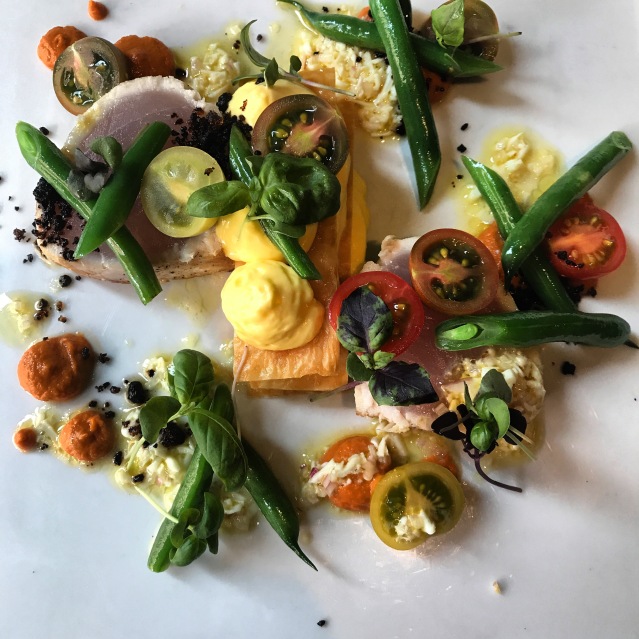
At Rioja, I recommend trying their egg-yolk ravioli, which is deliciously divine and cooked to perfection. With a buttery dish like this, I would recommend pairing this with a wine with enough acidity to cut through the starch, butter, and yolks. A chardonnay or a pinot blanc would pair well with this plate, given the acidity and body typical these wines.
If you plan to go to Rioja, I would recommend booking via OpenTable in advance as this place is well sought after. They open at 5 p.m. for dinner and are located at 1431 Larimer Street, Denver, CO.
I hope you have enjoyed this day as much as I have!
 Sacred Drop
Sacred Drop 
